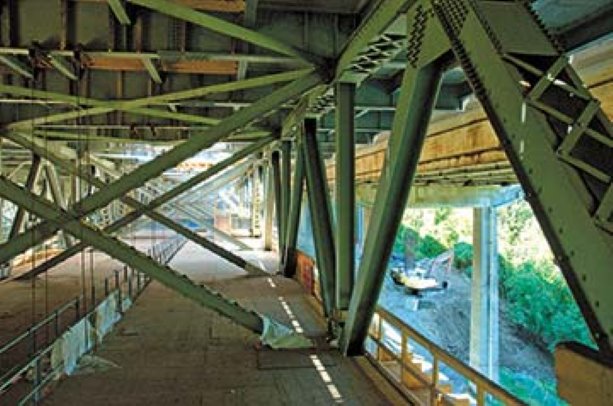It took nearly a decade but the Hoggs Hollow bridge expansion and repair at Highway 401 not only finished a year ahead of schedule, it will pay back the investment for years to come.
While most motorists may have only noticed — or more likely struggled with — the traffic jams across six lanes of traffic while it was widened to 16 lanes, what they didn’t see was all the work underneath where the steel trusses and gussets were being repaired or replaced.
Those in the industry however, did take note and engineers Morrison Hershfield won an Award of Merit in the Engineering Category for the $84 million project in 2013 from the Canadian Institute of Steel Construction. As MH’s Edward Li, P.Eng., vice-president transportation and civil structures put it: “It certainly was a huge challenge.”
For one, there was the demand that at least six lanes of traffic had to be live at all times and second, there was the issue of wrestling 1,200 tonnes of high grade 350 WT steel in to place, some 80 metres off the ground.
“The award went to the entire team,” said Li. “That was the owner, the Ministry of Transportation of Ontario, the design engineers who submitted the project, the contractor the Miller Group, the fabricator Structo (Canam) and the erector Walters Inc.”
“Really it wasn’t any different that any other bridge, just the scale and the price of course is so much bigger,” he said. “We had to be very careful because the steel trusses were single low-pass support. With a bridge, if you have two supports and one goes — you have a problem. With 10 supports there isn’t as much of a problem. Here we had to be very careful.”
The project was just one in a series of projects ongoing since 2003 and the steel support rehab started with an inspection to highlight the most unstable and corroded members.
The original structure was built in 1929 and then another bridge was added in 1959. Expanding to 16 lanes was a challenge both topside and underneath.
“There wasn’t a lot of documentation for the 1929 bridge and what we had was pretty sketchy so we had to go there and take measurements,” said Li. “Overall, the existing steel was in fair shape. It doesn’t generally get a lot of exposure to the elements but there were some obvious problems in places around rivets and connection.”
The job was done in eight stages, he said, and much of the progress depended on how well the contractors organized their crews and resources and coordinated with the other parts of the project going on around them.
At 378-metres it is the longest bridge on Canada’s busiest section of highway (400,000 average annual daily traffic), it was a high profile project with eight main trussed spans each 42.7 metres long and two approach spans of concrete slabs on steel beams. The demands of live traffic lanes did cause some logistical issues restricting work often to early morning construction activity.
Li said MH drew on their experience many years earlier widening the Leaside Bridge in Toronto back in the 1960s.
“It was a similar situation though less complicated,” he said.
Materials were hoisted from the roadway through the gaps in the bridges to the large scaffolding Miller Group installed as a working platform. Li also said there was a lot of communication back and forth between the contractors and the installation crews since there were field fits and cuts required given the sometimes tight quarters.
“It wasn’t that bad overall because there’s about seven metres of headroom there,” he added.
However, a bigger issue for the steel crews were the local residents — raccoons who had been nesting there for years from the surrounding ravine. The arrival of crews created sudden interest in the workers’ lunches and garbage. A concerted effort to remove all food scraps and a deterrence program soon solved the issue.



Recent Comments
comments for this post are closed